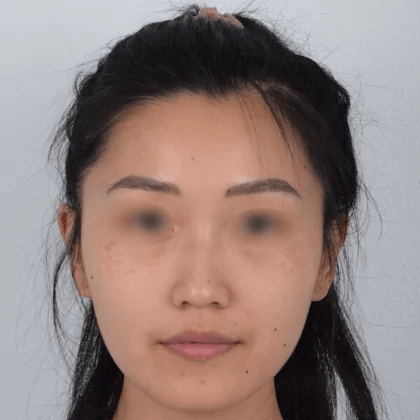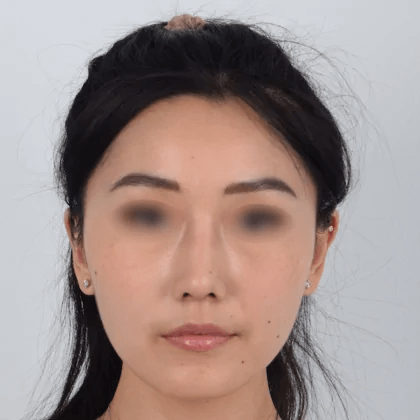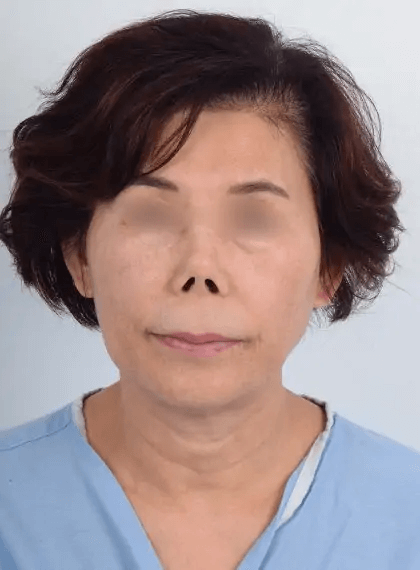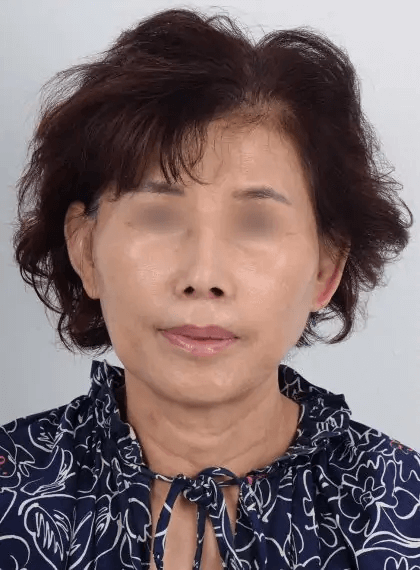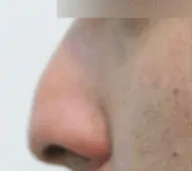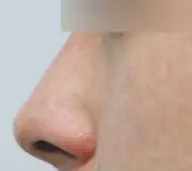Short Nose Rhinoplasty
The two main categories of the Asian short nose include a short dorsum and a short nasal tip.
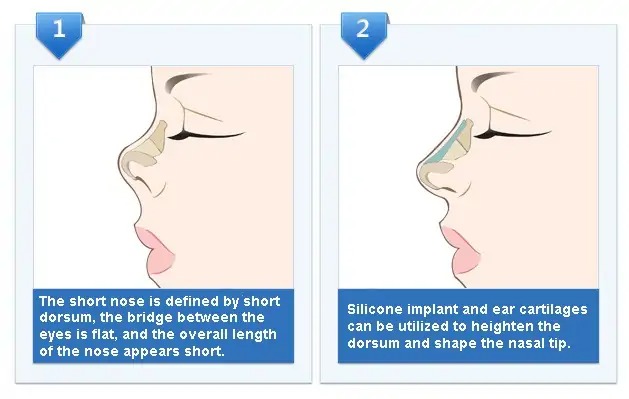
Types of Short Nose
SHORT DORSUM
In this case, the bridge between the eyes is flat and the overall length of the nose appears short. This condition causes the forehead to appear larger and face to appear flat without much contour in the mid-face. If a person has Mongolian folds (fold that form at the inner corners of the eyes), the flat dorsal bridge will emphasize the folds.
In order to correct this condition, the flat bridge must be heightened from between the eyes using silicone implant. Because a heightened bridge will create contour in the middle of the face, the flat, roundish impression of the face can be corrected. In addition, the size of the forehead will appear smaller, allowing for a more balanced impression.
The amount of augmentation (size of the implant) must be determined by examining the skin condition of an individual. If a larger size implant is inserted into the nose, not only the nose will appear unnatural but also increase the risk of complications.
Moreover, the dissection of the nose is important in lengthening the skin while accurately placing the silicone implant onto the nasal bone. Other methods also include utilizing autologous materials (such as cartilages and fat). However, this requires incisions on other parts of the body, and this method cannot be applied where there are insufficient amount of cartilages. Non-surgical methods are also available, such as fillers.
SHORT NASAL TIP
After the nasal envelope dissection, the cartilages at the nose tip must be released from the surrounding tissues and relocate them to change the shape of the nasal tip. If the tip requires more refinement, ear cartilages and Medpor are used to achieve the ideal shape of the nose.
Before and After Photos
Procedure
The duration of the surgery is different for each patient but the short nose correction is more complicated surgery, and thus requires longer time than other procedures. The surgery is performed under oral sedatives and local anesthesia, and pain during surgery is minimal. Each patient will have different degree of swelling right after the surgery, but the swelling is most severe on first two days of the surgery.
We recommend that a patient sleep with their head at a higher position by using extra pillows, in order to reduce swelling more quickly.
Post-Operative Care
The patient has to come in 1-2 days after the surgery for operative site cleansing. Our nurse will also teach you how to cleanse your nose and care for operative sites at home.




